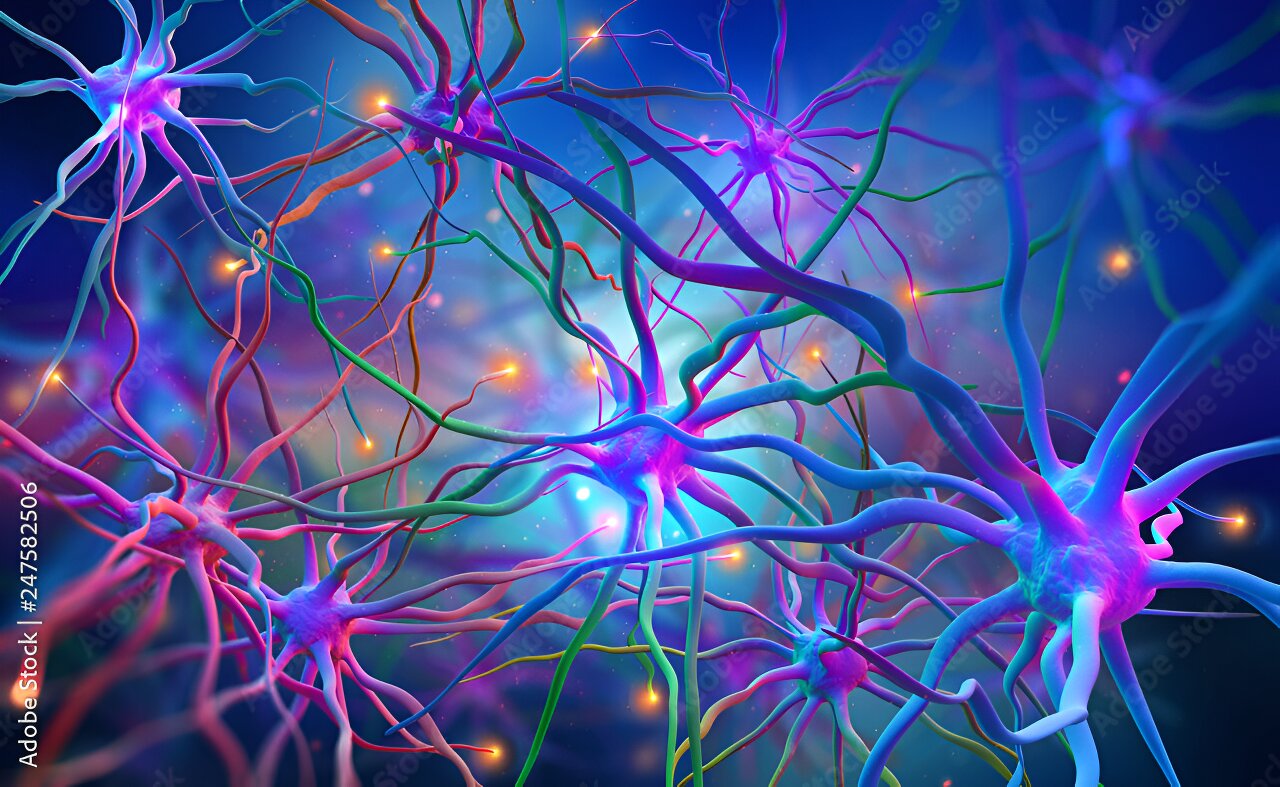Neural networks of the human brain; a 3D illustration. Credit: Lancaster University
Genetic Huntington’s disease not only affects nerve cells in the brain, but also has widespread effects on microscopic blood vessels, according to research.
These changes in the vascular system were also observed in the pre-symptomatic stages of the disease, demonstrating the potential of this research for predicting brain health and evaluating the beneficial effects of lifestyle changes or treatments.
Huntington’s disease is an inherited genetic disorder that leads to dementia, with a progressive decline in a person’s movement, memory and cognition. There is currently no cure.
In their studies published in Brain communicationa research team examined changes in the coordination between neuronal activity and brain oxygenation in Huntington’s disease.
The circulatory system and the brain work together to ensure that the brain receives sufficient energy. In fact, the brain requires as much as 20% of the body’s energy expenditure, despite weighing only about 2% of body weight.
The ‘neurovascular unit’ consists of the vascular system that is connected to neurons via brain cells called astrocytes and ensures that this cooperation is successful.
To assess the function of these neurovascular units, the researchers combined non-invasive measurement techniques and new analysis methods developed by Lancaster’s Nonlinear and Biomedical Physics group.
Probes that emit infrared light were placed on the heads of the study participants. The infrared light penetrated harmlessly through the skull and allowed researchers to measure the brain’s blood oxygenation.
Electrodes were also placed on the participants’ heads, which can measure the electrical activity of neurons. The researchers then used mathematical techniques to study the many rhythms associated with the functioning of the brain and cardiovascular system. These rhythms include heart and respiratory rates, related to the transport of nutrients and oxygen, as well as slower rhythms related to local control of blood flow. Brain activity manifests itself in faster rhythms.
The efficient functioning of the brain depends on how well all these rhythms are orchestrated. To assess the efficiency of the neurovascular unit, both the strength and coordination of these rhythms were assessed by calculating their “power” and “phase coherence”.
Professor Aneta Stefanovska from Lancaster University said: “We are hopeful that the method described can be used to monitor disease progression and evaluate the effect of potential treatments or lifestyle changes in Huntington’s disease and other neurodegenerative diseases. We also hope that our study will do that. driving new treatments for Huntington’s disease that target the vascular system and brain metabolism.”
In addition to Stefanovska, the research team includes Juliane Bjerkan, Gemma Lancaster and Peter McClintock from Lancaster University, Jan Kobal, Sanja Šešok and Bernard Meglič from the University Medical Center in Ljubljana, Karol Budohoski from the Cambridge University Hospitals NHS Trust, and Peter Kirkpatrick from the University from Cambridge.
More information:
Juliane Bjerkan et al., Neurovascular unit phase coherence is reduced in Huntington’s disease, Brain communication (2024). DOI: 10.1093/braincomms/fcae166
Quote: New Analysis Methods Used for Huntington’s Disease (2024, June 9) Retrieved June 9, 2024 from https://medicalxpress.com/news/2024-06-analysis-methods-huntington-disease.html
This document is copyrighted. Except for fair dealing purposes for the purpose of private study or research, no part may be reproduced without written permission. The content is provided for informational purposes only.





















